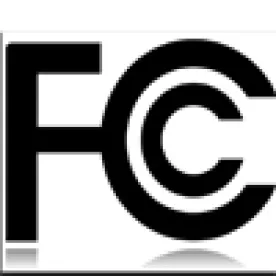The FCC recently adopted two items that underscore the Commission’s growing role in a quickly evolving national security regulatory framework: an Order and Notice of Proposed Rulemaking overhauling the regulatory framework for Section 214 authorization holders and applicants, as well as an “Enforcement Advisory” reminding operators of the risks of not disclosing certain transactions to the Commission.
Practical Guidance – What are the Key Takeaways from the FCC’s Actions? There are at least four takeaways telecom operators (and their investors) should be aware of going forward:
-
Continued Concern with Undisclosed Foreign Ownership. Currently, there is no mechanism for the FCC to review a Section 214 authorization holder’s ownership structure once an authorization has been granted unless the authorization holder seeks approval for a change in control or an assignment of authorization. Given the FCC’s increasing profile as a national security regulator, the one-time information requirement described below provides the FCC with long-sought visibility into the ownership of telecom providers with authority to provide international telecommunications. Stakeholders should expect the FCC to closely review the information provided in this information collection and take action in the event national security risks are identified—such as by referring certain issues for further review by the Committee on Foreign Participation in the U.S. Telecommunications Services Sector (typically known as “Team Telecom”).
-
More Frequent Review of Section 214 Authorization Holders’ Ownership/Operations. The proposals in the NPRM described below will likely require the renewal of an international Section 214 authorization (not currently required) and/or more frequent, periodic reporting obligations for ownership, operational, and other relevant information. These more frequent reporting requirements should incentivize Section 214 holders to carefully consider any national security implications raised by, for example, foreign investors that sit on a carrier’s cap table or relationships with certain vendors or service providers that the FCC could determine merit further scrutiny.
-
Potential Disclosure of 5% or Greater Owners. While Team Telecom and the Committee on Foreign Investment in the United States (“CFIUS”) currently require the disclosure of 5% or greater owners, the FCC’s current threshold is 10%. The FCC seems aware that its asymmetrical approach has created potential visibility gaps it is now eager to fill by proposing to lower the disclosure threshold to 5%.
-
Review of Operators with Foreign MNSPs/Cross-Border Facilities/“Covered List” Equipment. The NPRM also proposes to require that applicants disclose any foreign-owned managed network service providers (“MNSPs), cross-border facilities, or use of “Covered List” equipment, even when the applicant itself does not have reportable foreign ownership—and “routinely” refer applications disclosing the use of these foreign providers or equipment to Team Telecom. With the reliance on MNSPs and foreign vendors by many smaller carriers, this proposed requirement could disincentivize the use of foreign-owned MNSPs (and result in the “on-shoring” of MNSPs) if the downside risk is a likely Team Telecom review.
Order and NPRM
The FCC’s Order and Notice of Proposed Rulemaking (“Order and NPRM”) could usher in sweeping new oversight authority of international Section 214 authorizations. The Order and NPRM requires a one-time collection of foreign ownership information from international Section 214 authorization holders and initiates a proceeding seeking comment on significant changes to the international Section 214 framework. We summarize these changes below:
-
One-time Foreign Ownership Information Collection. The Order imposes a one-time collection of foreign ownership information from all international Section 214 authorization holders. Each Section 214 authorization holder must identify and provide information about any current foreign interest holders of 10% or greater direct or indirect ownership that hold such equity and/or voting interests. Specifically, the Order requires Section 214 authorization holders to submit the following information, based on how their foreign ownership status (if any) falls into one of these categories:
-
Reportable Foreign Ownership—Adversaries. Where interest holders are entities and individuals that are a government organization or citizen of a “foreign adversary” country, as defined by the Department of Commerce’s rule,[1] the authorization holder must identify its 10% or greater direct or indirect foreign interest holders in this category as of 30 days prior to the filing deadline. This information must (1) identify each interest holder above the threshold and the foreign country or countries, including countries that are not foreign adversary countries; (2) disclose whether any interest holder has dual or more citizenships, identifying each country; and (3) certify to the truth and accuracy of this information. Included in the information about the foreign interest holder is the name, address, citizenship, and principal business.[2] In requiring the identification of the interest holders, the FCC will adopt the framework of 47 C.F.R. § 63.18(h) from the initial application process.[3] This means that indirect ownership (ownership through one or more intervening entities) is accounted for and will be determined by successive multiplication of the ownership percentages for each link in the vertical ownership chain, except that wherever the ownership percentage for any link in the chain that is equal to or exceeds 50% or represents actual control, it shall be treated as if it were a 100% interest.
-
Reportable Foreign ownership—Non-Adversaries. Where interest holders are entities and individuals that are a government organization or citizen of a country not considered a “foreign adversary” by the Department of Commerce, the authorization holder must identify its 10% or greater direct or indirect foreign interest holders in this category as of 30 days prior to the filing deadline. The information must include (1) an identification of each interest owner above the threshold and the corresponding foreign country or countries; (2) disclose whether any interest holder has dual or more citizenships, identifying each country; and (3) certify to the truth and accuracy of this information. Included in the information about the foreign interest holder is the name, address, citizenship, and principal business. The FCC uses the same framework of indirect control found in 47 CFR § 63.18(h), explained in more detail above.
-
No Reportable Foreign Ownership. If there is no disclosable foreign ownership (i.e., 10% or greater), the authorization holder must provide a certification of that status to the FCC.[4]
-
Penalties. The NPRM also proposes penalties for non-compliance with the one-time information collection requirement in the Order. The FCC proposes canceling the authorization of any authorization holder that fails to respond to the one-time collection request required by the Order. The NPRM further contemplates forfeitures or other measures if a carrier fails to respond in a timely or complete manner.
-
-
Proposal for 10-year renewal requirement: The NPRM seeks comment on a proposed requirement for all international Section 214 authorization holders to renew their authorizations every 10 years, or, alternatively, periodically update their information to enable FCC review of each carrier’s ownership.[5] If adopted, these proposed rules would apply a public interest standard to evaluate the “totality of circumstances” presented by each situation and would take into consideration relevant national security, law enforcement, foreign policy, and trade policy concerns. In other words, information provided in a renewal filing or periodic information could trigger a referral by the International Bureau to Team Telecom, resulting in an often lengthy process where Team Telecom staff will closely scrutinize the authorization holder’s ownership, operations, and commercial relationships.
-
Streamlined Renewal (No Foreign Ownership). To accelerate the renewal process, the FCC’s proposed rules would streamline applications that do not have reportable foreign ownership. As a general matter, renewal applications would apply the same proposed rules that would be used in the new initial 214 application process to harmonize the requirements.
-
Penalties. The FCC proposes automatic termination of section 214 authority for carriers who fail to timely renew their authorization under the proposed requirement.[6]
-
-
Significant Proposals to Reform the Section 214 Application Process: The NPRM contemplates additional application requirements for all international Section 214 applicants and authorization holders. Below is a list of notable proposed changes:
-
5% Threshold for Reportable Ownership Interests. The NPRM proposes to lower the ownership reporting threshold to 5% or greater for reportable ownership interests for all initial applications, as well as for applications for a modification, assignment, transfer of control, and renewal of international Section 214 authority. This change has been long-anticipated and aligns the FCC’s ownership disclosure requirements with both Team Telecom and CFIUS. After the FCC circulated its initial draft of the NPRM, the NPRM added language seeking comment on the need for disclosure of 5% or greater ownership where the ownership interest is not passive or otherwise “insulated” under the Commission’s rules. This disclosure criteria would track the rules governing petitions for declaratory rulings to exceed the 25% statutory ownership cap for common carrier licenses under section 310(b) of the Act.[7]
-
Services and Geographic Markets Disclosure. The NPRM proposes a requirement for applicants to provide information about their current and expected services and geographic markets. Similar to the 5% reportable ownership threshold, this proposed requirement aligns with questions typically raised by Team Telecom and CFIUS focusing on an applicant’s service portfolio and operational footprint.
-
Cross-Border Facilities Information. Applicants would be required to identify the facilities that they use and/or will use to provide services under their international section 214 authority from the United States into Canada and/or Mexico and to provide updated information on a periodic basis.[8]
-
Facilities Cyber Certification. Applicants would need to certify in their Section 214 application that they will undertake to implement and adhere to baseline cybersecurity standards based on universally recognized standards.
-
Facilities “Covered List” Certification. Applicants would also be required to certify in their Section 214 application whether they use equipment or services identified in the FCC’s “Covered List” of equipment and services deemed to pose an unacceptable risk to the national security pursuant to the Secure and Trusted Communications Networks Act.[9]
-
Review of Operators with Foreign MNSPs. The FCC proposes to require all applicants to provide information on foreign-owned MNSPs.[10] Should an applicant use or intend to use foreign-owned MNSPs, the FCC seeks comment on the type of national security-related questions that should be required. With the intention of obtaining additional information, the FCC also contemplates conducting a one-time collection targeted to the use of foreign-owned MNSPs.[11]
-
The NPRM also proposes additional changes to the FCC’s rules regarding Section 214 applications, including limits on the number of 214 applications, a one-year requirement to commence service, applying permanent discontinuance, ongoing requirements to provide updated information to the FCC, and rules regarding the assignment of International Signaling Point Codes.[12] The NPRM would also require that all applicants certify in their applications whether or not they are in compliance with the Commission’s rules and regulations, the Act, and other laws.[13] Specifically, this would include U.S. antitrust or other competition laws, past fraudulent conduct before another government agency, or any other misconduct.
Enforcement Advisory
Last week, the FCC released an “Enforcement Advisory” reminding 214 authorization holders and common carrier licensees of the enforcement risks associated with transfers of control and assignments of assets that are not notified to the FCC, particularly where new, reportable foreign ownership is involved. Considered with the one-time information collection and 214 application changes described above, this advisory reinforces the FCC’s growing focus on undisclosed foreign ownership in regulated telecommunications providers. Operators should be aware of the requirement to seek approval for non-pro forma changes in control and the inherent risks in not reporting such transactions to the FCC.
****
The one-time foreign ownership information collection and the proposed ongoing reporting obligation for ownership and operational information could present strategic challenges for some telecom providers.
In particular, operators who have received significant foreign investment after obtaining a Section 214 authorization could face a referral to Team Telecom—a complex, burdensome process that can frequently result in significant restrictions on day-to-day operations and the ability to raise new capital. Similarly, many LP or venture investors who typically acquire less than 10% of a company’s stock—but often more than 5%—should be aware of the potential public disclosure of their ownership information in Section 214 applications.
Comments on the NPRM are due 30 days after the date of publication in the Federal Register.
FOOTNOTES
[1] 15 C.F.R. § 7.4. This includes China (including Hong Kong), Cuba, Iran, North Korea, Russia, Maduro Regime. Review of International Section 214 Authorizations to Asses Evolving National Security, Law Enforcement, Foreign Policy, and Trade Policy Risks, Amendment of the Schedule of Application Fees Set Forth in Sections 1.1102 through 1.1109 of the Commission’s Rules, Order & Notice of Proposed Rulemaking, FCC 23-28, at ¶ 20 (2023) (“Order and NPRM”).
[2] Id. at ¶ 18.
[3] 47 CFR § 63.18(h).
[4] Order and NPRM at ¶ 20.
[5] Id. at ¶ 45.
[6] Id. at ¶¶ 25, 26, 73.
[7] See 47 CFR § 1.5003.
[8] Order and NPRM at ¶ 107.
[9] Id. at ¶ 4.
[10] Id. at ¶ 101.
[11] Id. at ¶ 103.
[12] See generally Id. at ¶¶ 126-172.
[13] Id. at ¶ 125.





 />i
/>i

